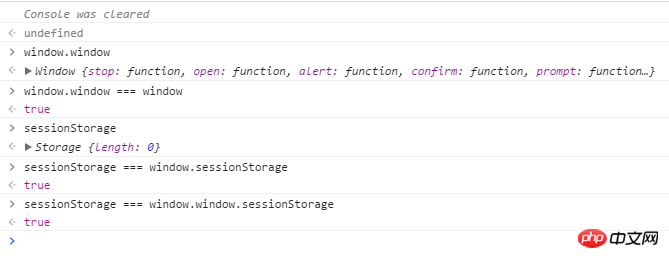I saw someone else writing in a vue project:
// 如果从详情返回并且之前存有对应的查询条件和参数
// 则直接渲染之前的数据
if (window.window.sessionStorage.searchKey && window.window.sessionStorage.tab === this.searchKey.tab) {
this.topics = JSON.parse(window.window.sessionStorage.topics);
this.searchKey = JSON.parse(window.window.sessionStorage.searchKey);
// 下一个dom 更新序列之后再执行函数
this.$nextTick(
() => $(window).scrollTop(window.window.sessionStorage.scrollTop)
);
} else {
this.getTopics();
}Why does window.window.sessionStorage here add two windows?
It stands to reason that the result of window.window.sessionStorage=== window.sessionStorage is true. What considerations does the author have in writing this?
w3c says this:
The window.window property is equivalent to the self property, which contains a reference to the window itself.
window.window What other application scenarios are there for writing like this?
仅有的幸福2017-05-19 10:18:49
Writing like this doesn’t seem to make sense, right? The window is originally under the window, so what’s the point of adding one more?
我想大声告诉你2017-05-19 10:18:49

From this, I don’t think there is any difference.
The reason why there is window.window This approach should be to avoid:
JavaScript 的垃圾回收 GC It is possible to recycle the window object, so I did this.
(The bottom one) Stackoverflow - window.window in JavaScript
The window property of a window object points to the window object itself